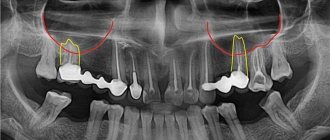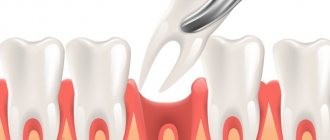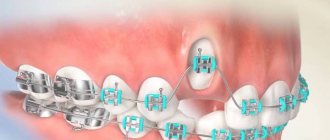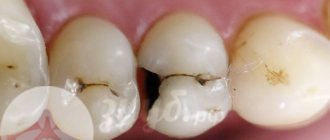To the reference book Enlarged lymph nodes signal the development of an inflammatory pathology in the body or may be a consequence of excessive growth of lymphoid tissues (lymphoproliferative diseases, hyperreactivity of the immune system).
Author:
- Oganesyan Tigran Sergeevich
ENT pathology expert
4.00 (Votes: 10)
Lymph nodes are peripheral organs of the lymphatic system, the main task of which is to provide a natural filter for lymph and the body's immune defense. In the lymph nodes, lymphatic fluid is filtered from microorganisms, atypical cells and other antigenically foreign particles. In this case, an immunological reaction develops, during which the formation and maturation of immune cells that are capable of destroying foreign agents (bacteria, fungi, viruses, parasites, malignant cells, foreign inclusions) occurs.
Enlarged lymph nodes signal the development of an inflammatory pathology in the body or may be a consequence of excessive growth of lymphoid tissues (lymphoproliferative diseases, hyperreactivity of the immune system).
Inflammation of the lymph nodes can be purulent and non-purulent, depending on the duration of the course - acute and chronic. It can be local (when only a certain group of nodes increases) and generalized (inflammation affects several unrelated groups at once).
Depending on their location, all lymph nodes are combined into the following regional groups:
- cervical, widely scattered along the front and side surfaces of the neck;
- mental, located behind the chin;
- occipital, located at the junction of the neck and skull;
- submandibular, lying in the middle of the lower jaw;
- parotid and behind the ear, located in front and behind the ears;
- axillary, one group of which is located in the thickness of the fiber of the axillary region, and the other is adjacent to the inner surface of the pectoral muscles;
- elbow – on the front surface of the elbow joint;
- inguinal, located in the inguinal folds;
- popliteal, localized on the back surface of the knee joints.
Thus, there are quite a lot of areas where enlarged lymph nodes can be detected. Moreover, with different diseases they increase in different ways. The following may differ: consistency, surface structure, mobility, pain on palpation, and the condition of the skin over them. It is very important to diagnose and identify the root cause of the development of the inflammatory process, which only a certified doctor can handle.
Causes and features of enlarged lymph nodes in various diseases
Most often, enlarged lymph nodes are a marker of immune or infectious diseases, including:
- acute respiratory viral infections (pharyngitis, tonsillitis) are the most common cause of enlarged lymph nodes; they are moderately painful, dense to the touch, their mobility is preserved;
- lymphadenitis - develops in the presence of a purulent process in the body, the lymph nodes are significantly enlarged, motionless and sharply painful on palpation, the skin over them turns red;
- tuberculosis - most often changes become noticeable in the lymph nodes of the chest cavity, less often in the neck; at first, the lymph nodes are moderately painful, but as the underlying disease develops, they adhere to each other and to the surrounding tissues, threatening to form a serious fistula;
- rubella – the cervical, parotid, and occipital nodes may enlarge; they are moderately painful and do not adhere to surrounding tissues;
- syphilis - an increase in nodes in the groin, not always painful, which is later replaced by the development of hard chancre on the genitals;
- HIV infection – lymph nodes of all groups enlarge, while for a long time other symptoms of pathology in the body may not be detected;
- autoimmune diseases (systemic lupus erythematosus, rheumatoid arthritis, sarcoidosis, autoimmune thyroiditis) - lymph nodes of all regional groups can enlarge;
- oncological pathologies - lymph nodes enlarge either due to metastasis from malignant neoplasms, or from diseases that attack the lymphatic system itself (Hodgkin's lymphoma and non-Hodgkin's lymphomas).
Taking certain medications (for example, hydralazine) can also cause changes in the size of lymph nodes. Another reason may be the presence of silicone prostheses in the body, which the lymphatic system perceives as a foreign body and gives a signal about the development of an inflammatory process. We can talk about both breast implants and prosthetic arms, legs and other parts of the body.
Causes of inflammation of the cervical lymph nodes
There are many factors that can trigger the appearance of inflammation in the body. There are several groups of lymph nodes in the neck area: superficial and deep. The action of the former is aimed at protecting the external integument, while the latter prevents the penetration of infection into the internal organs. Bacterial or viral infection of the pharynx, larynx, trachea, upper esophagus, as well as the oral cavity, nose and ear are the most common causes of inflammation of the cervical lymph nodes.
They can call him:
Treatment of enlarged lymph nodes
There is no specific treatment regimen, since enlarged lymph nodes are a symptom of a specific disease, and it is this disease that needs to be treated. If the increase is the result of a cold, no special measures are required to eliminate the symptom. The size of the nodes returns to normal as the underlying disease is treated as part of antibacterial or antiviral therapy using immunomodulatory agents.
A long-term infectious process, against the background of which the lymph nodes have swollen and become visually noticeable and painful on palpation, requires urgent consultation with a doctor. Depending on the etiology of the disease, you may need the help of an otolaryngologist, pediatrician, infectious disease specialist, and specialists in other fields. If you suspect malignant tumors, you should consult an oncologist.
What are lymph nodes in the neck
Lymph nodes are bean-shaped and ribbon-shaped formations of lymphatic tissue. In the neck, the nodes are located in clusters of up to 10 pieces, near blood vessels, mainly large veins. Their surface is represented by connective tissue, which forms a capsule. Trabeculae extend from it into the node, also connective tissue - the so-called supporting structures, similar to beams.
The internal structural basis of the node is a stroma of reticular connective tissue with process cells. These cells, together with the reticular fibers they form, form a three-dimensional network. The structure of the stroma also includes phagocytic cells of several varieties. The inner part of the ganglion is called the medulla. Closer to the plane of the capsule is the cortex with a superficial part and a zone of deep cortex.
The accumulation of lymphoid tissue inside the space of the node forms follicles - lymph nodes located closer to the capsule. The deep cortex contains a large number of lymphocytes with a dense and uniform arrangement. The lymph node, in fact, is a barrier to retain infection, pathologically altered cells, and tumors. It contains the formation of lymphocytes - protective cells that destroy foreign elements. Cervical lymph nodes are divided into:
- anterior cervical
- posterior cervical;
- occipital;
- chin;
- submandibular nodes.
In a normal state, a healthy person often cannot feel them, since they are small in size, soft and elastic, and quite mobile under the skin.
Contact our clinic!
“Ear, Nose and Throat Clinic” offers you consultations with doctors of the highest category, constantly developing in their specialization and working with advanced diagnostic and therapeutic equipment. A quick and competent diagnosis of enlarged lymph nodes is a guarantee of successful recovery with minimal risk of exacerbations. To make an appointment, you can leave an online application on our website or call us by phone. You should not postpone a visit to the doctor, as a protracted inflammatory process can lead to negative health consequences.
Diagnosis of the disease
During the initial examination, the doctor tries to identify the location of inflammation of the lymph node and determine in detail the area of pathology. To establish an accurate diagnosis and prescribe effective treatment, it is necessary to conduct a number of examinations and laboratory tests:
- polymerase chain reaction analysis;
- general blood analysis;
- biopsy to differentiate malignant and benign neoplasms;
- Ultrasound of the lymph node.
Culturological research of biological samples that are sown in nutrient media is practiced. Based on the content of formed colonies, the type of infectious agent, the intensity of the inflammatory process, and the resistance of microbes and viruses to pharmacological drugs are determined. Doctors of narrow specializations - otolaryngologists, dentists, endocrinologists, oncologists, infectious disease specialists, hematologists - can be involved in the diagnosis.
Symptoms of pathology
The fact that a person has “caught” a lymph node usually means its increase in size. Occasionally it hurts, and the skin over it becomes red. In this case, doctors talk about lymphadenitis.
An important point is the mobility of the lymph node. Normally, it easily moves a short distance. If the lymph node is motionless and enlarged, a doctor’s consultation is urgently needed.
Not all lymph nodes can be examined independently. When magnified, they can be felt on the neck, under the armpits, and in the groin area. It is important where the inflamed area is located. If a lymph node in the neck has caught a cold, how to treat it will differ from the situation when the groin or axillary area is affected. By localization, one can judge a preliminary diagnosis, since lymphadenopathy is often only a symptom of the underlying disease.
Prevention
As part of prevention, it is recommended to avoid exposure to risk factors that cause lymph node cancer, if possible. Individuals at risk are advised to undergo regular medical examinations.
| More information about treatment at Euroonco: | |
| Oncologist-hematologist | 11500 rub. |
| Chemotherapy appointment | 6900 rub. |
| Emergency oncology care | from 12100 rub. |
| Palliative care in Moscow | from 44,300 rubles per day |
| Radiologist consultation | 11500 rub. |
Book a consultation 24 hours a day
+7+7+78
Forecast
The prognosis of lymph node cancer depends on many factors. The key points here are:
- Type of lymphoma.
- Prevalence of the process.
- Patient's age.
- General condition of the patient at the time of diagnosis.
- Possibility of radical treatment.
In general, when treating stage 1-2 lymphomas, it is possible to achieve a complete 5-year remission in more than 80% of cases. Unfavorable prognostic signs are: age over 60 years, involvement of the bone marrow in the process and the presence of extralymphatic lesions.
How is lymph node dissection performed?
Removal of lymph nodes is carried out with mandatory adherence to certain principles developed in oncology and designed to minimize the risk of new metastases.
Firstly, it is not a separate lesion that is removed, but the tumor along with the surrounding tissue and lymph nodes as a single block, during one operation (monoblock principle).
Secondly, lymph node dissection is performed according to the zonal principle, taking into account anatomical boundaries. This means that it is impossible to remove only individual nodules with metastases from different zones (zoning principle).
Thirdly, metastases must be removed taking into account their relationship with neighboring structures (the principle of casing).
Lymph node dissection can be performed openly or endoscopically under general anesthesia.
If lymph node dissection is performed in the thoracic, abdominal or pelvic cavity, the organ affected by the tumor is first removed, then the lymph nodes and internal tissue. During lymph node dissection, the fatty tissue along with the lymph nodes is separated from the muscles and removed.
After removal of the lymph nodes, ligation and intersection of the vessels are performed, then the surgical wound is sutured.
Often, lymph node dissection takes longer than removal of the primary tumor focus.
After the operation, the obtained material is submitted for morphological examination.
9500 patients annually
- We accept patients 24/7
- Stabilization, resuscitation, medical care
Call me back!
How to detect metastases in lymph nodes
The problem is not simple, since if there are a small number of mutated cells in the lymph nodes, there are usually no symptoms. If there is any suspicion, the doctor must make an accurate diagnosis.
This is where lymph node biopsy comes to the rescue. It is carried out in different ways:
- Biopsy with needle insertion into a questionable node. Carry out under local anesthesia. The procedure takes up to 30 minutes.
- Open biopsy. This is a surgical procedure performed under anesthesia, local or general, with the removal of part or all of the lymph node.
- Sentinel lymph node biopsy. A radiopharmaceutical or fluorescent dye is injected into the tumor. Penetrating the lymph vessels, it reveals the problem node, the so-called sentinel node.
After the biopsy procedure, all materials are sent to the laboratory for study.
Treatment of cancer of the lymphatic system
Treatment of lymph node cancer will depend on the histological type of the tumor, the stage of the disease, the age of the patient and his general condition. For each type of lymphoma, its own treatment protocols have been developed, taking into account the listed factors. In general, the following methods are used:
- Chemotherapy.
- Radiation therapy.
- Surgical intervention.
- Targeted therapy.
- Other treatments.
Chemotherapy
Chemotherapy is the mainstay of treatment for the vast majority of lymphatic cancers. Treatment consists of several blocks, for example, remission induction, remission consolidation and maintenance therapy. In some cases, when the tumor is very aggressive or there are relapses, high-dose chemotherapy is used followed by stem cell transplantation.
Chemotherapy drugs can be administered systemically (orally or intravenously) or locally, particularly into the spinal canal. This is necessary in cases where there is a high risk of damage to the membranes of the brain and spinal cord.
Radiation therapy
As an independent method of treating cancer of the lymphatic system, radiation therapy is rarely used, for example, for localized lesions of relatively benign lymphomas.
Radiation therapy is also used as palliative treatment to reduce symptoms of the disease. For example, to relieve bone pain, reduce the volume of tumor mass due to compression of internal organs, etc.
Surgery
Surgical interventions for lymph node cancer are performed for palliative purposes, to eliminate life-threatening conditions. For example, with perforation of the gastrointestinal tract, with the development of obstructive jaundice, etc. As the main method of treatment, surgery is used for isolated damage to internal organs, for example, the gastrointestinal tract, but in this case chemotherapy is still necessary.
Other treatments
Treatment regimens for many types of lymphomas include the use of targeted drugs, immunotherapy, monoclonal antibodies, etc. Such methods make it possible to achieve remission in a larger number of patients, improve treatment results in the event of relapses, and increase overall life expectancy.
Possible complications
The following types of complications can be expected with lymph node cancer:
- Compression of internal organs by tumor masses with the development of corresponding symptoms. In some cases, it can be a life-threatening condition. For example, enlarged mediastinal lymph nodes can lead to compression of the esophagus or large blood vessels in the area. Enlarged intra-abdominal and retroperitoneal lymph nodes can compress the intestines, ureters or bile ducts with the development of such serious complications as intestinal obstruction, acute urinary retention, obstructive jaundice.
- If the tumor grows into the walls of the intestines or stomach, perforation of the organ may occur with the release of its contents into the abdominal cavity. This inevitably leads to the development of peritonitis.
- Another serious complication of lymph node cancer is profound immunodeficiency, which leads to the development of deadly infections.
- Aggressive types of lymphomas tend to spread rapidly, involving the bone marrow, brain and spinal cord. This leads to impaired hematopoiesis, which provokes the development of severe anemia and thrombocytopenia with bleeding. In addition, immunodeficiency is further aggravated. When the central nervous system is involved in the process, convulsions, loss of consciousness, paresis, paralysis and other neurological symptoms may occur.
About lymph
The lymphatic system consists of lymph nodes and the vessels that feed them. It is multifunctional, but its main function is to protect the body from various pathogens.
For this purpose, immune cells exist in the lymph nodes - T-lymphocytes and B-lymphocytes.
The passage of blood through small capillaries creates a plasma filtration effect. Some of the blood enters the surrounding tissues, and some goes back into the bloodstream. Another one - into the vessels. The result is the formation of lymph. It is a clear, watery liquid containing immune cells.
Lymphatic vessels, uniting, enter the thoracic lymphatic ducts, right and left, the same, in turn, flow into the veins. This results in the return of fluid to the bloodstream.
Lymph nodes, as part of the body's immune system, are located in different parts of the body. Their task is to be filters, a kind of barriers for infectious carriers and pathogenic cells.
When to see a doctor
Lymph node cancer requires timely detection at the earliest stage, since the prognosis of recovery depends on this. If you have risk factors or symptoms of the disease, you should immediately consult a doctor for appropriate diagnostic measures. In the case of cancer of the lymphatic system, the patient requires the help of an oncologist. In our oncology center on 2nd Tverskoy-Yamsky lane. House 10 employs the best specialists who specialize in the diagnosis and treatment of various types of oncology.










